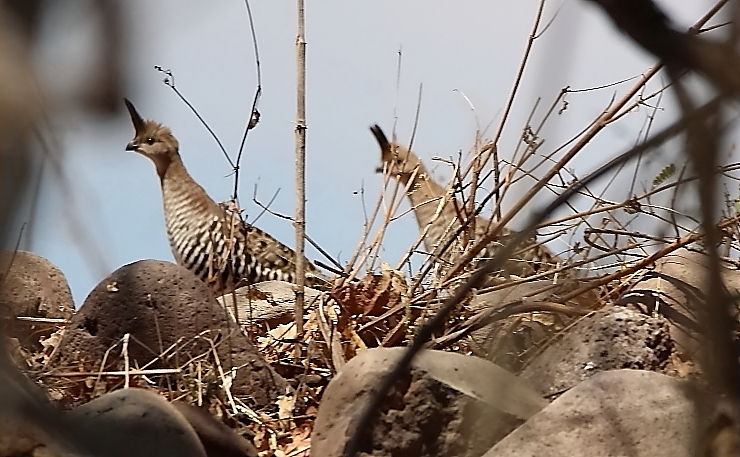
I would not normally choose driving to two of my furthest regular sites back-to-back. But when April came around, and I had not yet gone to see the birds that are specific to my highest site (3,000 m/10,000 ft), I drove one hour each way for a very successful visit there.
And then, during the following week… It rained! And after four days of rains, a very unusual occurence here for April, I knew this was my best time for a spring visit to my lowest site (1,000 m/3,300 ft), as the suddenly cooler temperatures favored a trip to the Tierra Caliente. So, once again, I chose to drive one hour each way, but this time, downhill.
I had already visited the lowland town of Paso Ancho in January. So I didn’t really expect to see many new species on this visit. Boy, was I wrong!
With ten species I had not seen previously this year, my April 11th visit to Paso Ancho was my best outing since February 14th, back when it was a whole lot easier to find FOY species. Here are photos of a few of them:
This is about as good a photo as I expect to ever take of a Great Swallow-tailed Swift. Unlike other swallows, this one seems to always fly in a straight line — and then it’s gone — instead of circling overhead. Still, this very large swift is really something to see; eBird’s page describes it as a “large, spectacular swift”, which it is. The strongly cleft tail, white rump patches. and white neck made the ID of even this poor photo a slam-dunk.
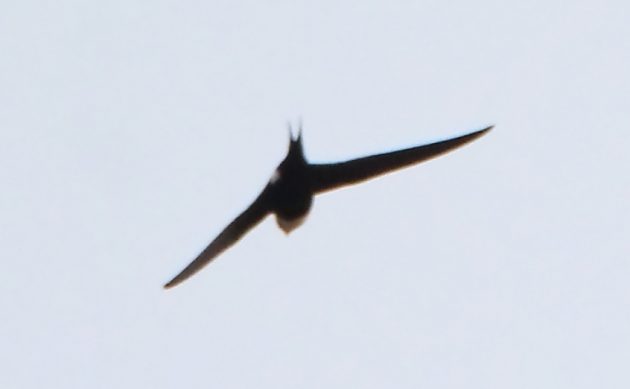
I can’t imagine why it took me so long to see my first White-tailed Kite this year.
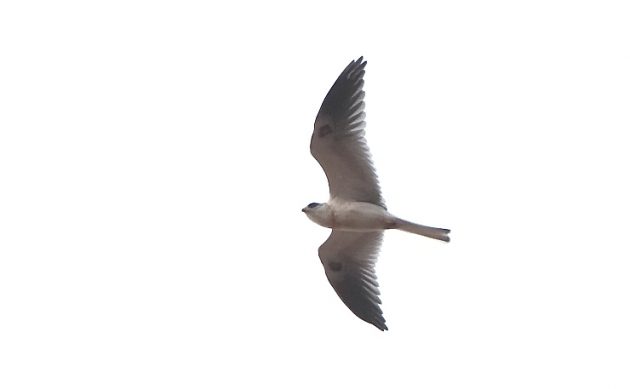
I also can’t imagine why I hadn’t seen an Orchard Oriole before this trip. Both the kite and this oriole can be seen in a variety of habitats I visit often.
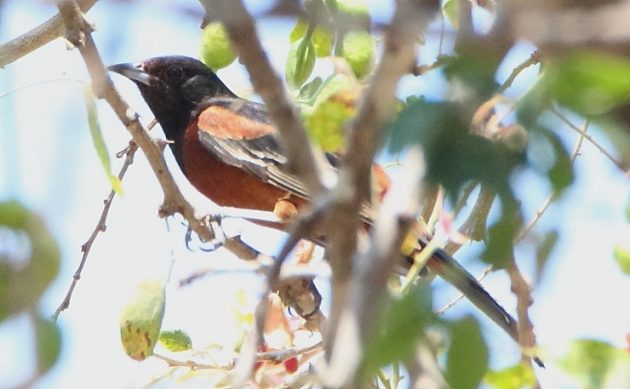
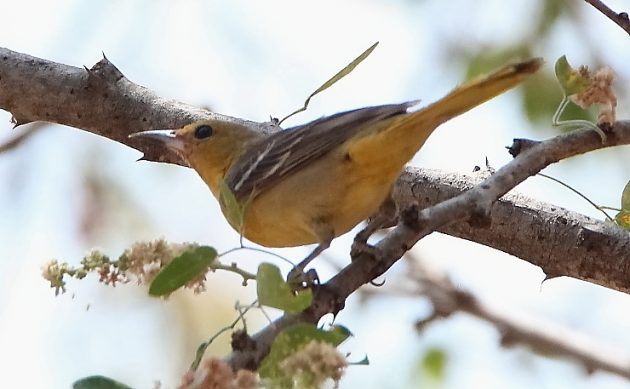
Last spring, a Plain-capped Starthroat helpfully turned up in my home garden. This year, I had to wait until April and travel an hour to see one.
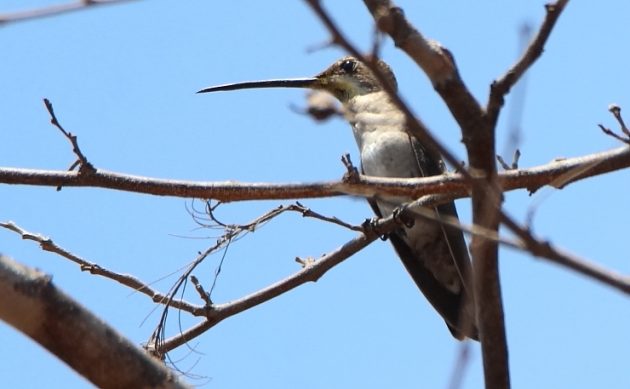
The Starthroat’s rather subtle colors are hard to see in most light, but there is no mistaking that massive bill, the longest of any of our local hummingbirds.
The Brown-crested Flycatcher is a member of the very difficult Myiarchus genus of Tyrant Flycatchers. The lack of gray shading on its rufous tail is one of the most reliable ID clues.
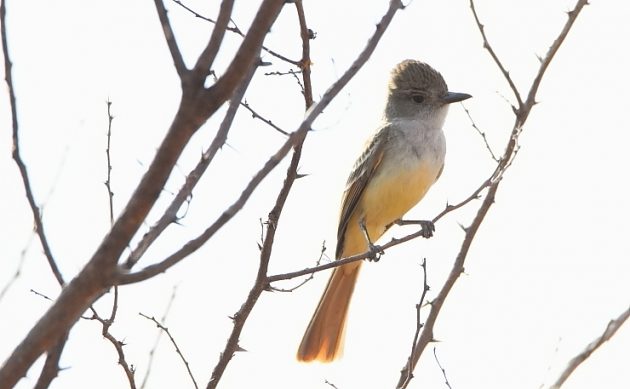
Down here, the Gray-crowned Yellowthroat is the only Yellowthroat that can be seen away from bodies of water.
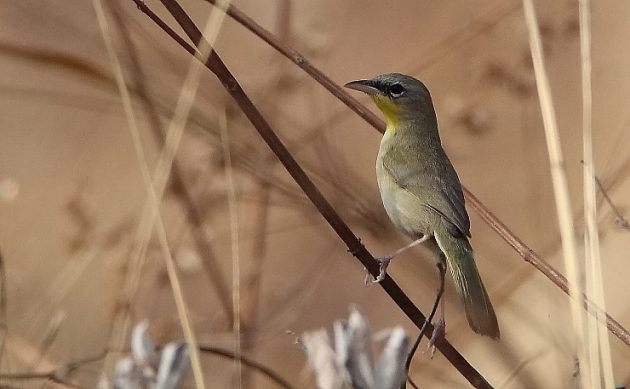
At first, I thought this Tropical Kingbird was a migratory Western Kingbird. Once I studied my photos at home, I noticed the notched tail that distinguishes the Tropical. (That’s still easier than it would have been in eastern Mexico, where the Tropical and Couch’s Kingbirds can only be distinguished by their songs.) Still, both the Tropical and the Western Kingbirds would have been FOY birds.
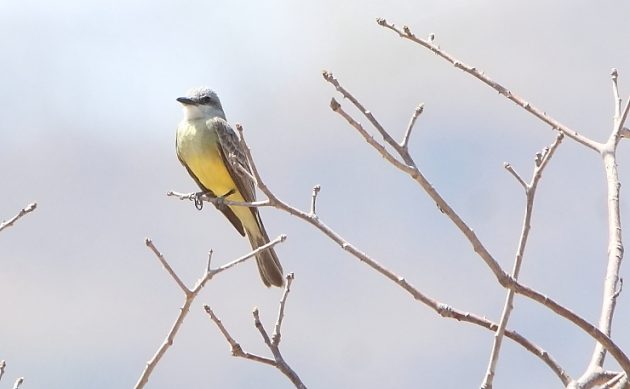
In spite of the week’s unusual rains, this photo of a Botteri’s Sparrow was marred by Tierra Caliente’s usual intense light levels. Still, it was just good enough to reveal that I had seen yet another new species for the year.
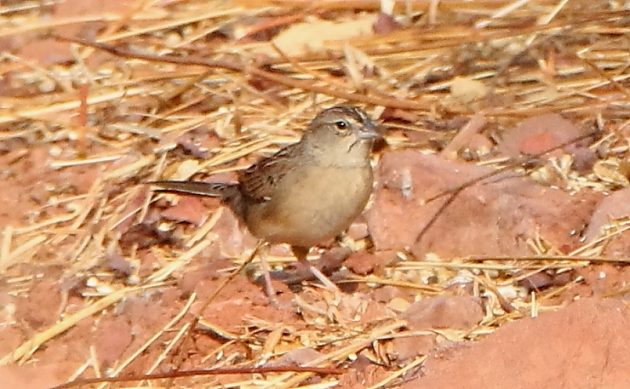
My final two FOYs did not allow me photos. Thankfully, no photographs were needed for me to know I had seen my first White-throated Magpie-Jay away from the Mexican coast. There is no mistaking that magnificent tail and blue back. And I did not even see any Banded Wrens, but their unmistakeable song was heard everywhere.
Here are a few other photos I enjoyed from this outing.
A quick glance might suggest that male Bronzed Cowbirds are all black. Better light levels reveal something quite different.
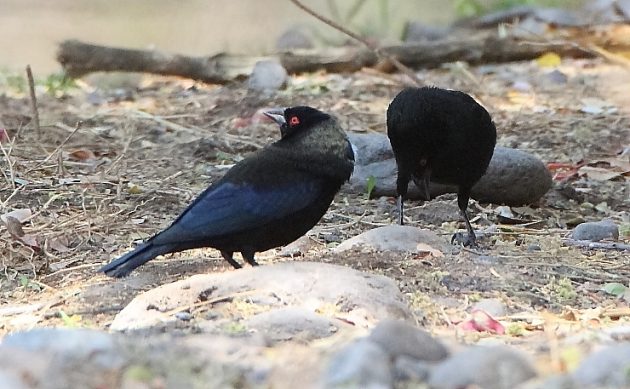
This Black-headed Grosbeak was excited about these guamuchil pods, with their sweet white pulp. So was I — seeds from this trip are sprouting in my garden already.
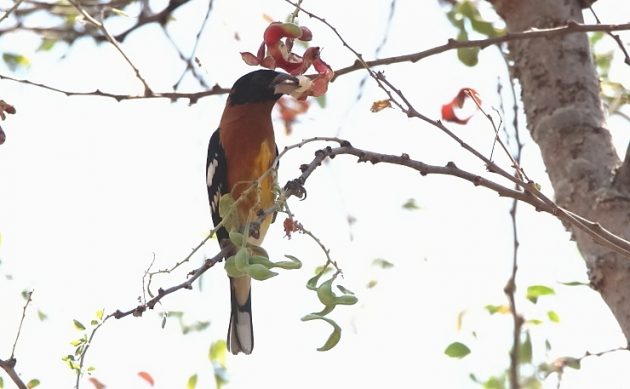
Endemic Dusky Hummingbirds may be unusually drab members of their colorful family. But they do have a sense of style and movement.
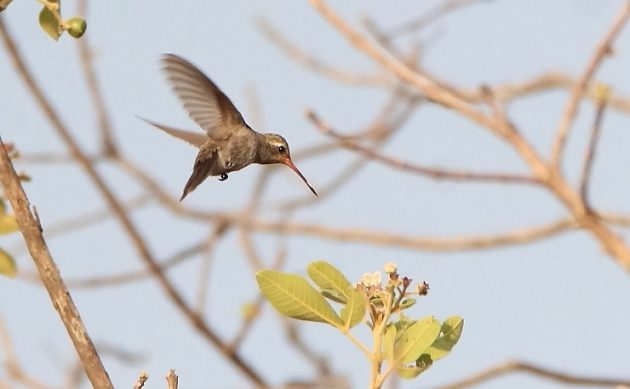
And finally, those are endemic Banded Quail getting low at the top of this post.













Leave a Comment